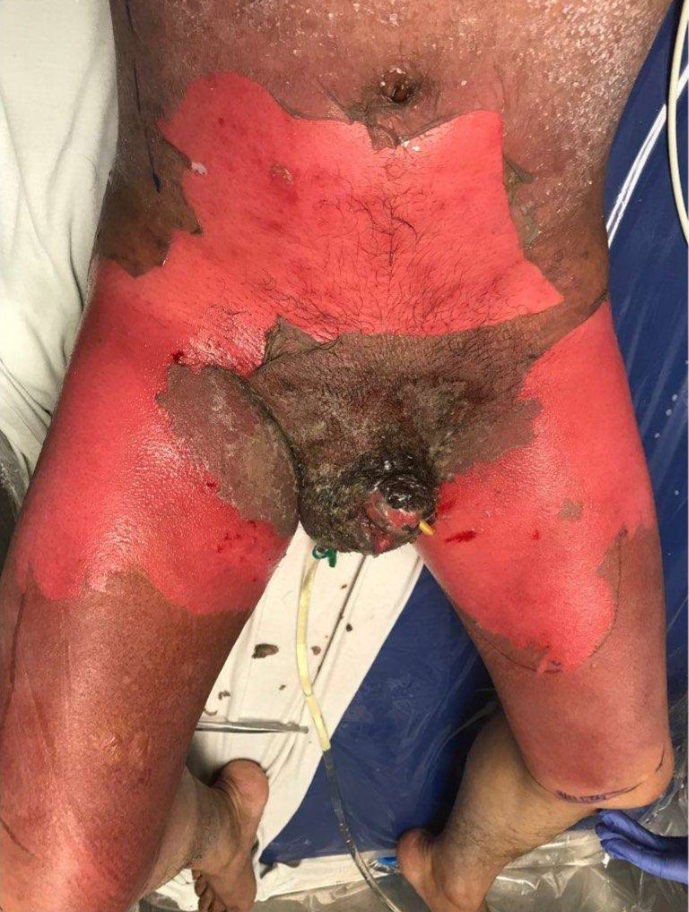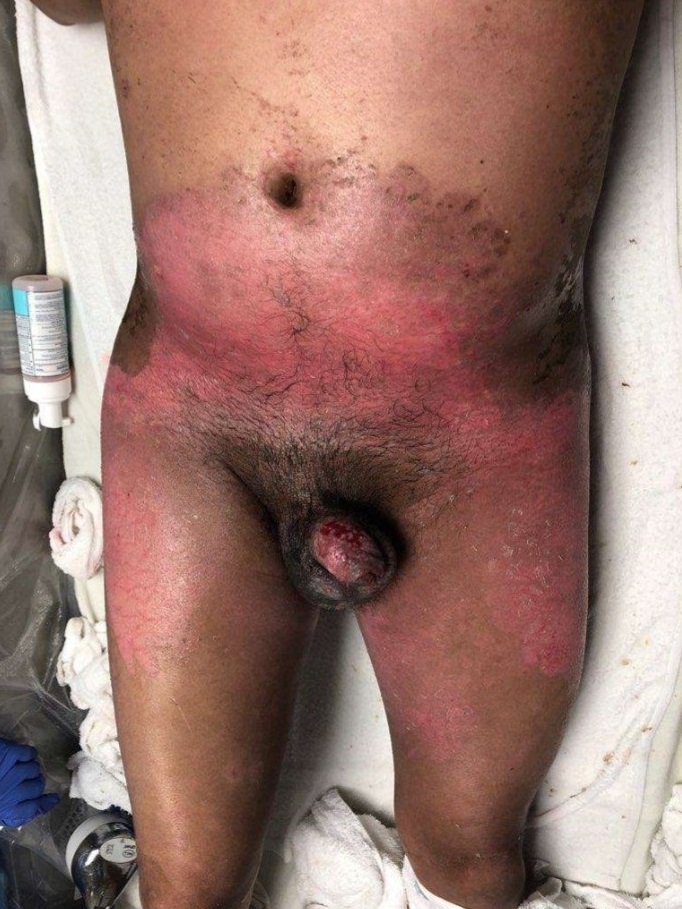Case Presentation: A healthy 39-year-old man was admitted to the hospitalist service for an extensive rash that was suspicious for Stevens-Johnson Syndrome (SJS). He presented with diffuse bullae and desquamation of the pelvis and lower extremities (Image A). One week prior to admission, the patient applied topical Nigella sativa oil (colloquially known as black cumin seed oil) to his lower extremities in an attempt to treat chronic pain with a natural remedy. Hours after application, he developed non-painful pruritus. Days later, vesicles erupted evolving into bullae with diffuse erythema spreading to his lower abdomen far beyond where he originally applied the oil. Biopsy showed a basket-weave stratum corneum and dyskeratosis throughout the epidermis with focal superficial necrosis, consistent with either SJS or severe contact dermatitis. Dermatology diagnosed him with severe contact dermatitis given his clinical history notable for pruritus, non-painful erythema, absence of mucosal involvement, and lack of known SJS-inciting medications. He was instructed to never use Nigella sativa oil again. He was treated in a burn unit and improved substantially over two weeks (Image B) with supportive care and wound care, including: triamcinolone 0.1% ointment, SilvaSorb cream, daily dressing changes, Foley catheter placement, and certizine/hydroxyzine for pruritus. Notably, systemic glucocorticoids were deferred.
Discussion: Nigella sativa oil, commonly known as black cumin seed oil, is a widely available “natural” extract with purported anti-inflammatory properties. It has previously been implicated in causing a severe contact dermatitis mimicking SJS both clinically and histologically[1]. Similar to our patient, these patients had evidence of skin involvement far from the original application site. The pathology found in our patient was also similar to the epidermal apoptosis previously described. Systemic glucocorticoids have been advocated for the management of extensive contact dermatitis [2]. Both our patient and the patients previously described [1], improved dramatically without systemic glucocorticoids.
Conclusions: This case highlights several important dermatological concepts for hospitalists to consider. First, a desquamative rash does not always represent SJS spectrum pathology, but can in fact represent a severe contact dermatitis. While atypical, the rash of this severe contact dermatitis can spread far beyond the original application site. Second, dermatological histology must be clinically correlated as epidermal apoptosis can represent a variety of disease entities including both SJS and severe contact dermatitis. Finally, severe contact dermatitis can be successfully treated without the use of systemic glucocorticoids; thus, avoiding the numerous adverse effects associated with systemic glucocorticoid therapy.


